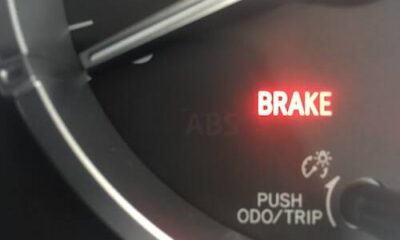SAFETY / CAR CARE
When to change Brake discs and pads

Brake discs and pads require special maintenance to ensure optimal braking while driving your vehicle. In addition to an important safety issue, it is also a mandatory maintenance to pass the technical inspection in particular.
Why worry about the condition of your brake discs and pads?
Discs and pads are essential for a car’s brakes to work properly. In order to maintain optimal braking and not take any risks, it is necessary to monitor their wear and identify the ideal moment to change them . Indeed, a lack of maintenance of the vehicle can be the subject of an exclusion of guarantee in a car insurance contract and the motorist risks then not to be compensated in case of accident.
The brake pad consists of a lining and a metal support which clamps the brake disc , in order to create friction slowing down the rotation of the wheel. Each time braking, the pad and the disc erode until it finally stops slowing the vehicle down. The brakes may then become unresponsive, particularly in the event of hard braking, in rainy weather or in winter.
How to check the wear of your brake discs and pads?
There are several ways to detect the right time to replace your brake pads and discs:
The indications displayed on the dashboard: most vehicles are today equipped with a wear warning. The brake fluid level can also be a good indicator of the state of the pads;
Specific tools such as a caliper or a “palmer”, specially designed to measure the thickness of the filling;
Visual inspection may also be sufficient to identify the condition of the brake discs and pads. A damaged disc has “waves” on its surface and a pronounced rim, while a worn pad has little or no lining.
A brake check is recommended every 10,000 km to 30,000 km . Wear varies, however, depending on the type of vehicle and the driving environment: in urban use, the brakes are more stressed than on the highway and the braking system must therefore be checked more frequently.
The brake pads wear out faster than the discs, which have to be changed every two sets of pads. Finally, the rear brake discs change half as often as the front ones, which are more stressed by the vehicle.
How to change your brake discs and pads yourself?
If the replacement operation is not very technical, it does however require specific tools, so it is easier to contact a professional. But any motorist, even without a particular appetite for mechanics, can take care of changing their brake discs and pads. To do this, you must plan:
- A brake cleaner to degrease new discs before installation;
- A jack to raise the vehicle;
- A screwdriver to remove the wheels from the axle concerned and push back the pistons;
- A set of new pads (and / or discs).
If sold in any garage, brake discs and pads can also be purchased online , for example at an auto parts site. It is imperative to change the brake pads as soon as a disc has been replaced, because old pads may wear out the new disc prematurely.
New brake pads require a break-in of at least 500 km or even 1,000 km depending on the type of driving. The brakes are less effective during this period because the contact surfaces are still very smooth and therefore not very effective. It is therefore advisable to extend the safety distances and avoid sudden and prolonged braking so as not to take any risk.
-

 AVIATION5 years ago
AVIATION5 years agoPhoto News: Air Peace commence flight operations to South Africa
-

 Car News5 years ago
Car News5 years agoPolestar is recalls over 2000 electric cars due to software bug
-

 Technology5 years ago
Technology5 years agoCommon mistakes in CO₂ emissions calculations
-

 RAIL4 years ago
RAIL4 years ago36 Killed in Pakistan Train Accident
-

 Business5 years ago
Business5 years ago2016 Volvo XC60 review and specifications
-

 Reviews5 years ago
Reviews5 years ago2021 Audi A6 Specifications and Review
-

 SAFETY / CAR CARE5 years ago
SAFETY / CAR CARE5 years agoHandbrake warning light; what it means and what to do
-

 NEWS4 years ago
NEWS4 years agoFG To Spend ₦900 Billion On Fuel Subsidy In 2022
